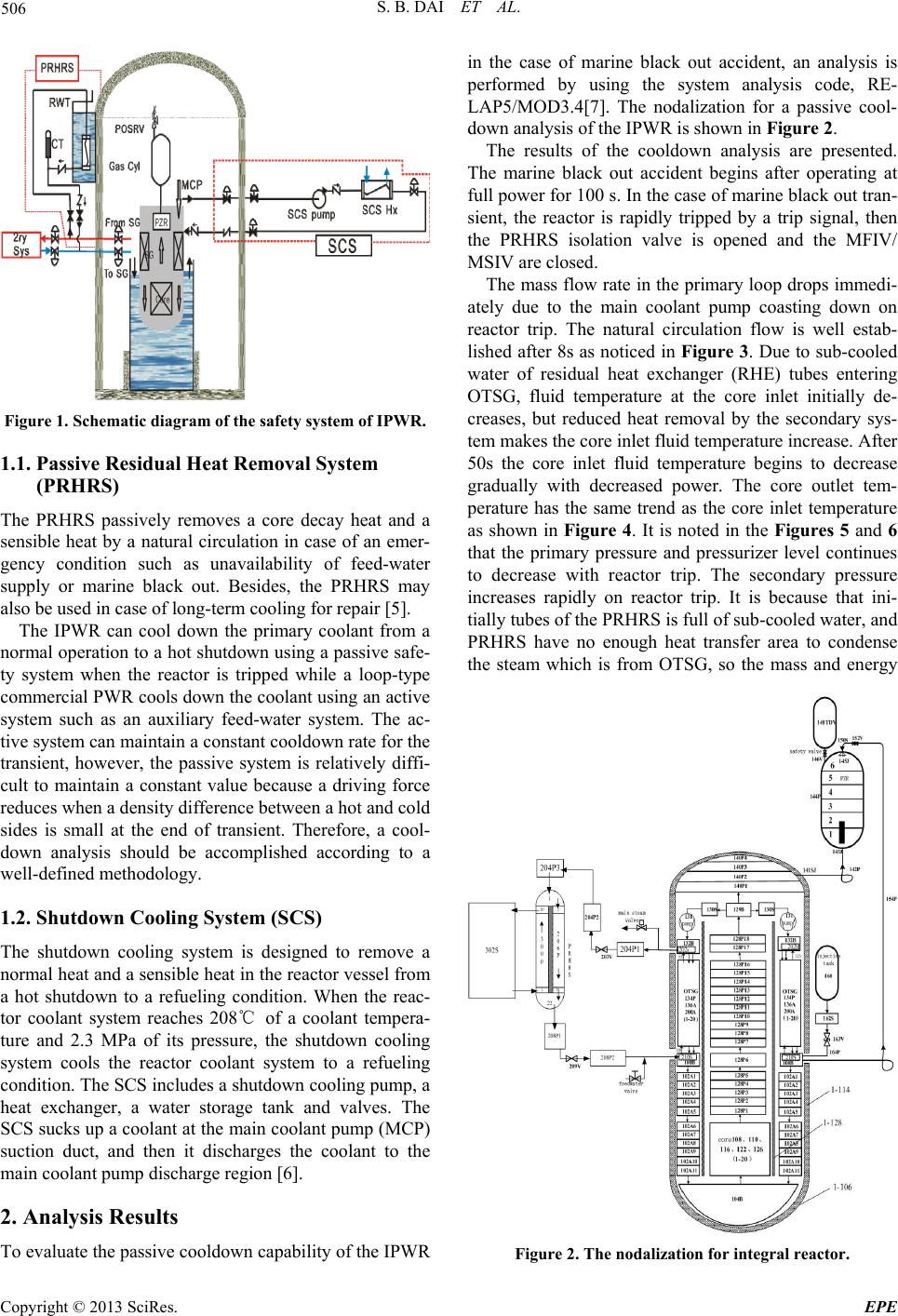
S. B. DAI ET AL.
506
Figure 1. Schematic diagram of the safety system of IPWR.
1.1. Passive Residual Heat Removal System
(PRHRS)
The PRHRS passively removes a core decay heat and a
sensible heat by a natural circulation in case of an emer-
gency condition such as unavailability of feed-water
supply or marine black out. Besides, the PRHRS may
also be used in case of long-term cooling for repair [5 ].
The IPWR can cool down the primary coolant from a
normal operation to a hot shutdown using a passive safe-
ty system when the reactor is tripped while a loop-type
commercial PWR cools down the co olant using an activ e
system such as an auxiliary feed-water system. The ac-
tive system can maintain a co ns tant coo ldown rate for the
transient, however, the passive system is relatively diffi-
cult to maintain a constant value because a driving force
reduces when a density difference between a hot and cold
sides is small at the end of transient. Therefore, a cool-
down analysis should be accomplished according to a
well-defined methodology.
1.2. Shutdown Cooling System (SCS)
The shutdown cooling system is designed to remove a
normal heat and a sensible heat in the reactor vessel from
a hot shutdown to a refueling condition. When the reac-
tor coolant system reaches 208℃ of a coolant tempera-
ture and 2.3 MPa of its pressure, the shutdown cooling
system cools the reactor coolant system to a refueling
condition. The SCS include s a shutdown cooling pump, a
heat exchanger, a water storage tank and valves. The
SCS sucks up a coolant at the main coolant pump (MCP)
suction duct, and then it discharges the coolant to the
main coolant pump discharge region [6].
2. Analysis Results
To evaluate the passive cooldo wn cap ability of the IPWR
in the case of marine black out accident, an analysis is
performed by using the system analysis code, RE-
LAP5/MOD3.4[7]. The nodalization for a passive cool-
down analysis of the IPWR is shown in Figure 2.
The results of the cooldown analysis are presented.
The marine black out accident begins after operating at
full power for 100 s. In the case of marine black out tran-
sient, the reactor is rapidly tripped by a trip signal, then
the PRHRS isolation valve is opened and the MFIV/
MSIV are closed .
The mass flow rate in the primary lo op drops immedi-
ately due to the main coolant pump coasting down on
reactor trip. The natural circulation flow is well estab-
lished after 8s as noticed in Figure 3. Due to su b-cooled
water of residual heat exchanger (RHE) tubes entering
OTSG, fluid temperature at the core inlet initially de-
creases, but reduced heat removal by the secondary sys-
tem makes the core inlet fluid temperature increase. After
50s the core inlet fluid temperature begins to decrease
gradually with decreased power. The core outlet tem-
perature has the same trend as the core inlet temperature
as shown in Figure 4. It is noted in the Figures 5 and 6
that the primary pressure and pressurizer level continues
to decrease with reactor trip. The secondary pressure
increases rapidly on reactor trip. It is because that ini-
tially tubes of the PRHRS is full of sub-cooled water, and
PRHRS have no enough heat transfer area to condense
the steam which is from OTSG, so the mass and energy
Figure 2. The nodalization for integral reactor.
Copyright © 2013 SciRes. EPE